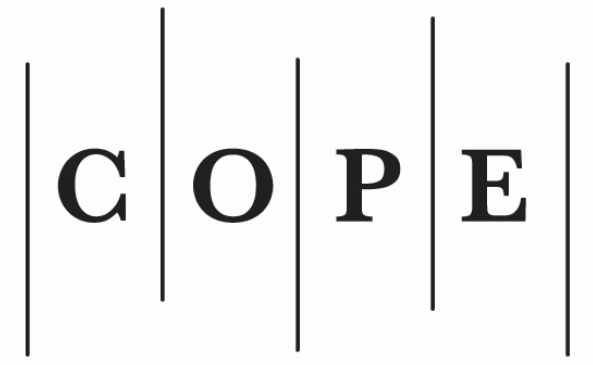Kompiuterinis teisinių samprotavimų modeliavimas
plugins.themes.bootstrap3.article.main693505f961333
Santrauka
Teisė yra viena iš tinkamiausių probleminių sričių dirbtinio intelekto metodams taikyti. Pirmos idėjos šioje srityje buvo iškeltos dar 1949 metais. Atliekant tyrimus kuriamos teisininkams naudingos kompiuterinės sistemos ir formalios metodikos. Kita vertus, teisė yra ideali analizės, tikrinimo ir eksperimentų sritis, kurioje galima kurti ir tobulinti pačius dirbtinio intelekto metodus.
Straipsnyje aptariama, kokie teisinių žinių ypatumai nulemia intelektualizuotų teisinių sistemų savybes ir kokiems uždaviniams spręsti šios sistemos naudojamos. Atsižvelgiant į uždavinius, išskiriami keli intelektualizuotų sistemų tipai - teisinės analizės, veiklos planavimo, koncepcinės informacijos paieškos ir teisės inžinerijos sistemos. Kitas sistemų klasifikavimo būdas - pagal modeliuojamų teisinių samprotavimų tradicijas. Čia išskiriamos statutinės teisės ir precedentinės teisės sistemos.
Straipsnyje nagrinėjama, kokie kompiuterinio modeliavimo metodai taikomi teisiniams samprotavimams modeliuoti. Apžvelgiami pagrindiniai metodai - dedukcija ir precedentinis samprotavimas, naudojantis indukcija ir analogija. Dažniausiai dedukcija taikoma teisinėms normoms ir euristikoms modeliuoti. Tai yra pagrindinis metodas statutinės teisės šalyse, prie kurių priskiriama ir Lietuva. Indukcija taikoma konkretiems atvejams apibendrinti ir tokiu būdu gauti dedukcijos taisykles. Analogija taikoma tada, kai norima priimti sprendimus atsižvelgiant į buvusius precedentus (sprendimus, priimtus panašiais atvejais). Sistemose, modeliuojančiose teisinius samprotavimus, šie metodai dažniausiai yra derinami vienas su kitu ir taip gaunami hibridiniai metodai. Straipsnyje aptariami ir kai kurie kiti šioje srityje taikomi metodai - argumentavimas, deontinė logika, hipertekstas, neuroniniai tinklai. Be to, atskirai nagrinėjami klausimai, susiję su kompiuteriniu modeliavimu rengiant teisinius dokumentus.
Socialiniai teisės aspektai riboja teisinių samprotavimų automatizavimo galimybes, todėl kompiuterinio modeliavimo eksperimentai sulaukia kai kurių teisininkų kritikos. Tačiau pripažįstama, kad tam tikru mastu kompiuterinis teisinių samprotavimų modeliavimas yra įmanomas ir gali padėti teisininkams priimant sprendimus.
Straipsnyje aptariama, kokie teisinių žinių ypatumai nulemia intelektualizuotų teisinių sistemų savybes ir kokiems uždaviniams spręsti šios sistemos naudojamos. Atsižvelgiant į uždavinius, išskiriami keli intelektualizuotų sistemų tipai - teisinės analizės, veiklos planavimo, koncepcinės informacijos paieškos ir teisės inžinerijos sistemos. Kitas sistemų klasifikavimo būdas - pagal modeliuojamų teisinių samprotavimų tradicijas. Čia išskiriamos statutinės teisės ir precedentinės teisės sistemos.
Straipsnyje nagrinėjama, kokie kompiuterinio modeliavimo metodai taikomi teisiniams samprotavimams modeliuoti. Apžvelgiami pagrindiniai metodai - dedukcija ir precedentinis samprotavimas, naudojantis indukcija ir analogija. Dažniausiai dedukcija taikoma teisinėms normoms ir euristikoms modeliuoti. Tai yra pagrindinis metodas statutinės teisės šalyse, prie kurių priskiriama ir Lietuva. Indukcija taikoma konkretiems atvejams apibendrinti ir tokiu būdu gauti dedukcijos taisykles. Analogija taikoma tada, kai norima priimti sprendimus atsižvelgiant į buvusius precedentus (sprendimus, priimtus panašiais atvejais). Sistemose, modeliuojančiose teisinius samprotavimus, šie metodai dažniausiai yra derinami vienas su kitu ir taip gaunami hibridiniai metodai. Straipsnyje aptariami ir kai kurie kiti šioje srityje taikomi metodai - argumentavimas, deontinė logika, hipertekstas, neuroniniai tinklai. Be to, atskirai nagrinėjami klausimai, susiję su kompiuteriniu modeliavimu rengiant teisinius dokumentus.
Socialiniai teisės aspektai riboja teisinių samprotavimų automatizavimo galimybes, todėl kompiuterinio modeliavimo eksperimentai sulaukia kai kurių teisininkų kritikos. Tačiau pripažįstama, kad tam tikru mastu kompiuterinis teisinių samprotavimų modeliavimas yra įmanomas ir gali padėti teisininkams priimant sprendimus.
plugins.themes.bootstrap3.article.details693505f964217
Skyrius
Mokslo straipsnis
Šiam žurnalui suteikta Creative Commons Priskyrimas - CC BY 4.0 licencija (taikoma nuo 2025 m.).






